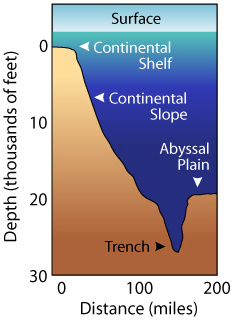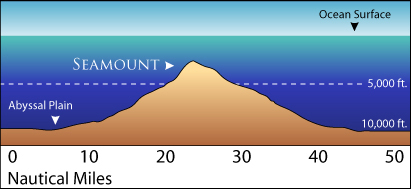
Figure 6.1.2, Depth of abyssal plains and
trenches.
|

Figure 6.1.3, A seamount.
|
|
Trenches are found adjacent and parallel to continents and island
chains. At least twenty-two trenches have been identified, although
not all are classified as major. Of this number, eighteen are in the
Pacific Ocean, three in the Atlantic Ocean, and one (the Java
Trench) in the Indian Ocean. Trenches are not uniform in depth or
width, but the depths of major trenches exceed 18,000 feet and the
widths vary from ten to twenty-two miles. The deepest point in the
ocean is the Challenger Deep, which is 35,810 feet deep, in the
Marianas Trench. The depths of many trenches are greater than the
elevation of the world's highest mountain. Mount Everest (29,028
feet) would be less imposing if dropped into the Challenger Deep. In
fact, the tip of Mount Everest would be farther down than the depth
of the Grand Canyon.
|
Seamounts are isolated mountains rising from 3,000 to 10,000 feet
above the surrounding seabed. Shaped like cones, they have a
characteristic depression similar to a crater at the summit.
Samplings gathered from over fifty seamounts found evidence that
indicates they are of volcanic origin. Seamounts are found in all
oceans, but are more numerous in the Pacific Ocean with over 2,000
identified. They are especially abundant in the Gulf of
Alaska.
The Cobb Seamount, discovered in 1950, is in a chain of seamounts
that extends into the Gulf of Alaska. Located just 270 miles off the
coast of Washington, it is one of the most thoroughly explored of
all seamounts. Cobb rises from a depth of nearly 9,000 feet to
within 124 feet of the surface. Because of relatively shallow depth
and good lighting conditions, divers have explored and mapped most
of the twenty-three acre flat top. The closest land feature similar
to the seamount is a volcano that rises upwards from surrounding
flatlands.
|



